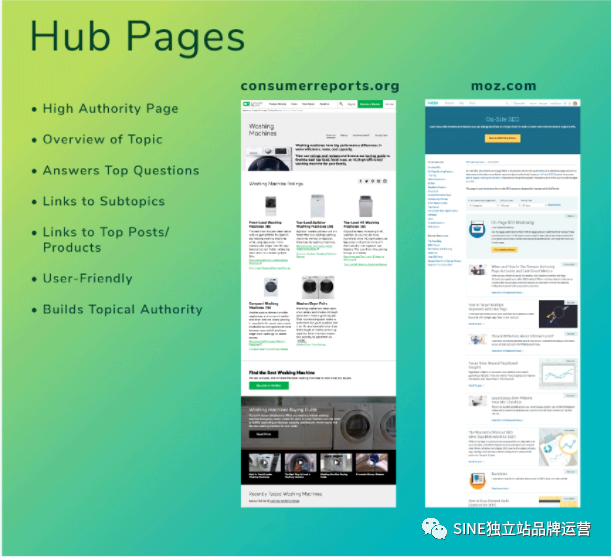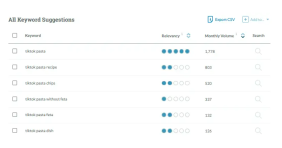16. Over-Optimization: Titles, URLs, Stuffing, and Links过度优化:标题、URL、填充和链接
As SEOs, we like to get "perfect" scores. We like to optimize everything. It's even in our title!作为 SEO,我们喜欢获得“完美”的分数。我们喜欢优化一切。甚至在我们的标题中!
But for newer sites, and sites without a lot of authority, over-optimization can be a real drag. 但是对于较新的站点和没有很多权限的站点,过度优化可能是真正的拖累。
What exactly is over-optimization?究竟什么是过度优化?
In short, over-optimization means a lack of diversification in your SEO elements. For example, if your target keyword is "best plumber Seattle", over-optimization might look like:简而言之,过度优化意味着您的 SEO 元素缺乏多样化。例如,如果您的目标关键字是“西雅图最佳水管工”,则过度优化可能如下所示:
Your title tag is "best plumber Seattle"您的标题标签是“西雅图最佳水管工”
Your url https://best-plumber-seattle.c...您的网址https://best-plumber-seattle.c...
Your H1 is "best plumber Seattle" 你的 H1 是“西雅图最好的水管工”
You include the phrase "best plumber Seattle" 20-25 times on the page 您在页面上包含“西雅图最佳水管工”一词 20-25 次
Most of your internal links (and external too) use "best plumber Seattle" as anchor text 您的大部分内部链接(以及外部链接)都使用“西雅图最佳水管工”作为锚文本
On the web, over-optimization like this doesn't appear naturally, unless an SEO deliberately puts it there. As this can influence rankings, Google typically takes steps to demote pages with over-optimized keywords.在网络上,像这样的过度优化不会自然出现,除非 SEO 故意将其放在那里。由于这会影响排名,因此谷歌通常会采取措施降低关键字过度优化的页面。
In short, don't over-optimize, diversify instead.简而言之,不要过度优化,而要多样化。
17. Internal Links, Relevance, & User Engagement内部链接、相关性和用户参与度
Here’s the special secret of this SEO checklist: Now that you've made a single page to rank, now you're going to make several more. 这是这个 SEO 清单的特殊秘密:现在您已经制作了一个页面进行排名,现在您将制作更多.
This is the SEO magic that makes this process work. In truth, it's incredibly difficult to rank a single page by itself for a handful of keywords - especially if there's any competition at all. 这是使这个过程起作用的 SEO 魔法。事实上,单独为少数几个关键字对单个页面进行排名是非常困难的——尤其是在存在任何竞争的情况下。
On the other hand, when you create several pages around a central theme, or even an entire site around that theme, the job becomes exponentially easier. 另一方面,当您围绕一个中心主题创建多个页面,甚至围绕该主题创建整个站点时,工作会变得更加容易。
By creating multiple pages that address related (but different) aspects of your topic, you create a web of topical relevance that allows you to:通过创建处理主题相关(但不同)方面的多个页面,您可以创建一个主题相关性网络,使您能够:
Interlink related pages...链接相关页面.
...with topical anchor text 带有主题锚文本
Improve user engagement by answering more questions
通过回答更多问题来提高用户参与度
Taken together, this strategy can improve the relevance of your site and pages for multiple queries. 总之,此策略可以提高您的站点和页面与多个查询的相关性。
18. Linking Internally for the Reasonable Surfer 为合理的冲浪者进行内部链接
Since we're now linking our topically related pages together, we now want to make sure to optimize our linking strategy for maximum SEO impact. 由于我们现在将我们的主题相关页面链接在一起,因此我们现在要确保优化我们的链接策略以获得最大的 SEO 影响。
Links are a powerful ranking signal, but remember, not all links are equal. Google doesn't "count" all links the same. 链接是一个强大的排名信号,但请记住,并非所有链接都是平等的。谷歌不会“计算”所有链接都一样。
How you link can be just as important (or more so) as what you link to. To leverage our links for maximum power, it's best to follow a few linking guidelines with every new page we create. 您的链接方式与您链接到的内容一样重要(或更重要)。为了利用我们的链接获得最大的力量,最好在我们创建的每个新页面中遵循一些链接指南。
Link to your most topically related content. The closer in relevance to your main topic, the more likely users will click on the links you provide. It's also widely believed that Google may pass more weight through topically relevant links (through a process known as Topic-Weighted PageRank.) 链接到您最热门的相关内容。与您的主要主题越接近,用户就越有可能点击您提供的链接。人们还普遍认为,Google 可能会通过与主题相关的链接(通过称为主题加权 PageRank的过程)传递更多权重。
When possible, try to link within your main content (as opposed to sidebars and navigation.)如果可能,请尝试在您的主要内容中进行链接(而不是侧边栏和导航。)
Additionally, try to link higher up within your main content, as these links may carry more weight than links further down the page. 此外,尝试在您的主要内容中向上链接,因为这些链接可能比页面下方的链接具有更大的权重。
Use anchor text with relevant keywords, but vary your anchor text greatly. In other words, don't repeatedly use the same anchor text over and over. Many SEOs recommend avoiding exact match keywords for anchor text, preferring partial match instead.使用带有相关关键字的锚文本,但要使锚文本变化很大。换句话说,不要一遍又一遍地重复使用相同的锚文本。许多 SEO 建议避免对锚文本使用完全匹配关键字,而更喜欢部分匹配。
Finally, after you've created a new page and linked to other pages on your site, you have one more step to go. Now it's time to update your older pages with links to your new page. We recommend not simply adding links to existing text, but adding context around the new links, which can boost both the relevance and the freshness of the new links.最后,在您创建了一个新页面并链接到您网站上的其他页面后,您还有一步要做。现在是时候用指向新页面的链接更新旧页面了。我们建议不要简单地向现有文本添加链接,而是在新链接周围添加上下文,这可以提高新链接的相关性和新鲜度。
19. Content Hubs & Category Pages内容中心和分类页面
Just as we know not all links are equal, not all pages are equal either.正如我们知道并非所有链接都是平等的,也并非所有页面都是平等的。
Category and/or hub pages can be incredibly effective tools for ranking all your related pages higher. While it's important to link your topically relevant pages together, it may be even more important to link relevant pages together under the umbrella of a master category (hub) page. There are several reasons for this: 类别和/或中心页面可以成为对所有相关页面进行更高排名的非常有效的工具。虽然将您的主题相关页面链接在一起很重要,但在主类别(中心)页面的保护伞下将相关页面链接在一起可能更为重要。有几个原因:
Category pages often have more link equity. They often sit closer to the homepage (or other high authority pages) and often attract external link equity as well. 类别页面通常有更多的链接资产。他们经常坐在更靠近主页(或其他高权威页面)的地方,也经常吸引外部链接资产。
Category pages often sit higher in a site's architecture hierarchy, meaning they are usually better placed in a site's navigation and breadcrumbs, for example.例如,类别页面在站点的架构层次结构中通常位于更高的位置,这意味着它们通常更适合放置在站点的导航和面包屑中。
These pages often can rank for high-volume head terms (as opposed to lower-volume long tail terms) 这些页面通常可以为高容量的头项(而不是低容量的长尾项)进行排名
Category pages can target broader user intent than individual topic pages, and can serve as a jumping off point into deeper dives for each subject.与单个主题页面相比,类别页面可以针对更广泛的用户意图,并且可以作为每个主题更深入研究的起点。

The wrong way to create category pages is to simply list your latest posts, or a list of relevant products. The best category pages typically have their own unique content, relevant answers to questions, and links to sub-topics and related pages. 创建类别页面的错误方法是简单地列出您的最新帖子或相关产品列表。最好的类别页面通常有自己独特的内容、相关问题的答案以及子主题和相关页面的链接。
For example, if your site sells 100 different types of hamster wheels, you probably want a broad category page that broadly covers all your hamster wheels. 例如,如果您的网站销售 100 种不同类型的仓鼠轮子,您可能需要一个广泛涵盖所有仓鼠轮子的广泛类别页面。
If such a page doesn't exist, you need to create one.如果这样的页面不存在,您需要创建一个。
Links are a powerful ranking factor. In fact, they might be the most powerful that we know of. If you want to rank, you almost certainly need links, but you've got to know the rules.链接是一个强大的排名因素。事实上,它们可能是我们所知道的最强大的。如果你想排名,你几乎肯定需要链接,但你必须知道规则。
Actually, there are two 50/50 rules of link building:实际上,链接构建有两个 50/50 规则:
#1. Assume Google ignores 50% of your links, and only 50% of your links are good. In reality, we don't know how many links Google ignores, but it's good to assume this regardless.#1. 假设 Google 忽略了您 50% 的链接,并且只有 50% 的链接是好的。实际上,我们不知道谷歌忽略了多少链接,但无论如何假设这一点是好的。
Google will ignore or devalue links for many reasons. Among them:谷歌会出于多种原因忽略或贬低链接。他们包括:
Irrelevance无关紧要
Manipulation (if they believe you've engaged in a pattern of linking that violates Webmaster Guidelines)操纵(如果他们认为您采用了违反网站站长指南的链接模式)
Disavowed否认
Links are marked nofollowed, or possibly "ugc" or "sponsored"链接被标记为nofollowed,或者可能是“ugc”或“sponsored”
Penalized domains 被惩罚的域名
And more
Earning links can be one of the most challenging jobs in SEO, so early on, it's tempting to go after the "easy" links, i.e. links you pay for, cheap directory links, blogroll links, etc. But as these are exactly the ones most likely to pass the least value, it's worth it to go after something better. 获取链接可能是 SEO 中最具挑战性的工作之一,所以在早期,很容易追求“简单”链接,即您付费的链接、廉价的目录链接、博客链接等。但因为这些正是这链接最有可能通过最小的价值,追求更好的东西是值得的。
As Google wants to reward high-quality, "natural" links (editorially given) - these are the links you want to pursue. The upper 50%.由于谷歌想要奖励高质量的“自然”链接(编辑给出) - 这些是您想要追求的链接。上层 50%。
Keep these two guidelines in mind: 请牢记以下两条准则:
The harder the link, the more valuable it can be 链接越难越有价值
The easier the link, the more likely it can hurt you 链接越容易,越有可能伤害你
#2. When building link-worthy content, spend 50% of your time actually creating the content itself, and 50% of your time promoting it.#2. 在构建值得链接的内容时,花 50% 的时间实际创建内容本身,并花50% 的时间来推广它。
"If you build it, they will come." 如果你做了,他们就会来
Sorry. No they won't. 对不起。不,他们不会。
Link building is typically an active endeavor. True, some types of content naturally earn links (and we'll incorporate these into our checklist.) But too many people create content and falsely believe the content is going to do all the work for them. 链接建设通常是一项积极的努力。确实,某些类型的内容自然会获得链接(我们会将这些内容纳入我们的清单。)但太多人创建内容并错误地认为内容将为他们完成所有工作。
If you want to rank, you've got to roll up your sleeves and tell people about it.如果你想排名,你必须卷起袖子告诉人们。
Outreach is tough for some, but if you want to get better, we highly recommend reading these link building promotion tactics from our friends at Siege Media.外展对某些人来说很难,但如果您想变得更好,我们强烈建议您阅读Siege Media 朋友提供的这些链接建设推广策略。
21. Don't Create Content Until You Do This First不要在做这个之前创作内容
Many link building campaigns fail, or at least fall short of their goals.许多链接建设活动都失败了,或者至少没有达到他们的目标。
Link building can fail for many reasons: content that doesn't resonate, poor design/layout, not enough outreach, and many other reasons.链接建设失败的原因有很多:内容没有引起共鸣、设计/布局不佳、外展不够,以及许多其他原因。
That said, one reason for link building failure stands head and tails above the rest: you created content before you knew exactly who was likely to link to it.也就是说,链接构建失败的一个原因比其他原因更为重要:您在确切知道谁可能链接到内容之前就创建了内容。
Link building needn't be a guessing game. Too often, folks create content and only then go looking for link targets, only to find that very few opportunities actually exist. Wasted effort!链接建设不一定是猜谜游戏。很多时候,人们创建内容,然后才去寻找链接目标,却发现实际上存在的机会很少。白费力气!
Instead, you want to guarantee your success. Or at least improve your chances. 相反,你想保证你的成功。或者至少提高你的机会。
Fortunately, SEO tools contain a ton of actionable link data. You can find out ahead of time:幸运的是,SEO 工具包含大量可操作的链接数据。您可以提前了解:
What type of content earns the most links 什么类型的内容获得的链接最多
What topics are trending什么话题热门
Exactly the kind of content that journalists/publishers/bloggers are looking for正是记者/出版商/博主正在寻找的内容类型
When you understand these data points ahead of time, you can create content that exactly fills an existing need. You also know who to reach out to—or who your audience is—before investing a ton of work. 当您提前了解这些数据点时,您可以创建完全满足现有需求的内容。在投入大量工作之前,您还知道要联系谁或您的受众是谁。
Rule: Don't create content until you first know exactly who's likely to link to it. 规则:在您首先确切地知道谁可能链接到它之前,不要创建内容。
22. The Easiest Shortcut to Good Links建立良好链接的最简单快捷方式
The same way you can leverage your competition to find the most profitable keywords, some of the easiest link building opportunities you will find will also come directly from your competitors.与您可以利用竞争对手找到最有利可图的关键字一样,您将找到的一些最简单的链接构建机会也将直接来自您的竞争对手。
In addition to using SEO tools to see who's linking to your competition, and what type of content has earned your competition the most links, you can investigate the numbers and sources of links pointing to the most popular sites on the web by exploring Moz's top 500 sites list, organized by metrics like number of linking domains. When looking into these or smaller competitors' inbound links, it's typically a no-brainer to perform a simple link gap analysis.除了使用SEO工具,看看谁的链接到你的竞争对手,以及什么类型的内容已经赢得了你的竞争最多的链接,你可以调查的数量和指向的链接来源大部分通过探索在网络上流行的网站莫兹500强站点列表,按链接域数量等指标组织。在查看这些或更小的竞争对手的入站链接时,执行简单的链接差距分析通常是不费吹灰之力的。
Here's one technique for a simple link gap analysis:这是用于简单链路间隙分析的一种技术:
See who's ranking in Google for your target keyword查看谁在 Google 中针对您的目标关键字进行了排名
Select 2-3 of the top ranking URLs 选择排名靠前的 2-3 个 URL
Use a link research tool to find pages that link to each of your competitor URLs (but not to you) 使用链接研究工具查找链接到每个竞争对手 URL(但不链接到您)的页面
Here's what this looks like in Link Explorer:这是链接资源管理器中的样子:
When a page links to multiple top ranking pages, it's typically a resource-type page. The barrier to getting a link for yourself from these resource pages is usually far lower than other types of pages (as long as you can show your content is superior!)当一个页面链接到多个排名靠前的页面时,它通常是一个资源类型的页面。从这些资源页面为自己获取链接的障碍通常远低于其他类型的页面(只要你能展示你的内容就更好了!)
Another similar tactic this pairs well with is broken link building. Whatever you choose, be sure to find who is linking to the competition, and earn those links for yourself.另一个与之相匹配的类似策略是建立断链。无论你选择什么,一定要找到谁链接到比赛,并为自己赢得这些链接。
23. Tentpole & Flywheels: Link Building on AutoPilot Tentpole & Flywheels:在 AutoPilot 上建立链接
Link building outreach is cool, but you know what's even cooler? Content that earns links completely on it's own.链接建设外展很酷,但您知道什么更酷吗?完全靠自己获得链接的内容。
No outreach required. 无需外展。
Since this process requires you to create at least one piece of "linkbait" content, it makes sense to create content that earns more and more links over time. This is one type of "Flywheel Marketing." 由于此过程要求您至少创建一个“链接诱饵”内容,因此创建随着时间的推移获得越来越多链接的内容是有意义的。这是一种“飞轮营销”。
Consider this scenario: A blogger needs to write about housing costs in Canada. They Google "most expensive small cities CA" and find a data-rich article on the first page. They link to this article, citing it as a source. 考虑这种情况:博主需要撰写有关加拿大的住房成本的文章。他们用谷歌搜索“加州最昂贵的小城市”,并在第一页找到了一篇数据丰富的文章。他们链接到这篇文章,引用它作为来源。
This type of "natural" link building happens all the time, thousands of times a day.这种“自然”链接建设一直在发生,每天发生数千次。
The trick to this type of flywheel link building is creating content that is naturally "citable" by bloggers and journalists. These types of content include (with our own examples from Moz):这种类型的飞轮链接构建的技巧是创建自然会被博主和记者“引用”的内容。这些类型的内容包括(使用我们自己的 Moz 示例):
Studies: 7 Search Ranking Factors Analyzed: A Follow-Up Study研究:分析的 7 个搜索排名因素:一项后续研究
Statistics/Data: How Data-Driven Content Marketing Builds Links and Earns Press Mentions统计/数据:数据驱动的内容营销如何建立链接并获得媒体提及
"How To" Content: How-To Content Isn’t Going Anywhere “操作方法”内容:操作方法内容无处可去
Guides: How Search Engines Work 指南:搜索引擎的工作原理
Tools: Domain SEO Analysis Tool 工具:域SEO分析工具
Wikis/Reference: SEO Glossary of Terms 维基/参考:SEO 术语表
Once these types of content start ranking, they tend to naturally earn more and more links over time, pushing them—and your site—even higher in search results.一旦这些类型的内容开始排名,随着时间的推移,它们自然会自然地获得越来越多的链接,从而将它们——以及您的网站——在搜索结果中推向更高的位置。
That said, don't throw away your manual outreach strategies entirely. For newer and less visible sites, it often takes a fair degree of effort to get your link building flywheel moving. This often means a lot of manual outreach at the beginning, and then momentum to continually carry you forward. 也就是说,不要完全丢弃您的手动外展策略。对于较新且不太显眼的站点,通常需要付出相当大的努力才能使您的链接构建飞轮移动。这通常意味着一开始需要进行大量的手动外展,然后是不断推动您前进的动力。
Smarter, not harder. 更聪明,而不是更难。
24. A World of Link Building Tactics 链接建设策略的世界
While this checklist gives you a number of link building guidelines, in truth, the greatest success comes when you color outside the lines. 虽然此清单为您提供了许多链接构建指南,但实际上,最大的成功来自于在线条之外着色。
Don't be tied to a single tactic! Link building can be challenging, especially before you get the hang of it, and you often have to try multiple angles before something sticks. 不要拘泥于一种策略!链接构建可能具有挑战性,尤其是在您掌握它之前,并且您经常需要尝试多个角度才能成功。
Because all content is different, and so is each audience, the best link building tactic is the one that you invent. 因为所有的内容都是不同的,每个观众也是如此,所以最好的链接构建策略是你自己发明的。
25. Keep It Fresh: Links, Content, & Engagement保持新鲜:链接、内容和参与度
Congrats! You now have a page that ranks. 恭喜!您现在有一个排名页面。
But can you keep your ranking?但是你能保持你的排名吗?
Google constantly shifts rankings based on relevancy. Earning a #1 spot is terrific, but only if you can hold onto it for the long run. This means keeping your SEO fresh. 谷歌不断根据相关性改变排名。获得第一名是很棒的,但前提是你能长期坚持下去。这意味着保持您的 SEO新鲜。
Many SEOs understand that freshness is a ranking signal, but they mistakenly believe that it only applies to the content itself. E.g. updating the publish date and refreshing the content every couple of years.许多 SEO 都明白新鲜度是排名信号,但他们错误地认为它只适用于内容本身。例如,每隔几年更新发布日期和刷新内容。
In truth, Google looks at several different types of freshness signals, and it's best to keep them all in mind. These may include: 事实上,谷歌查看了几种不同类型的新鲜度信号,最好把它们都牢记在心。这些可能包括:
Date last updated 上次更新日期
Amount of content updated (significant vs minor) 更新的内容量(重要与次要)
How often content is updated, i.e. a regular cadence may signal more freshness than updating only occasionally 内容多久更新一次,即有规律的节奏可能比偶尔更新更能体现新鲜感
How often you create new pages on your site 您在网站上创建新页面的频率
Rate of new link growth (don't let your link building stagnate) 新链接增长速度(不要让您的链接建设停滞)
Freshness of traffic and engagement signals (less relevant sites tend to have declining engagement) 流量和参与信号的新鲜度(相关性较低的网站的参与度往往会下降)
So after you do the work of ranking, you have to work to keep it there. Freshness isn't simply about the content itself, but about the entire SEO experience to continually deliver the most relevant result to the user.因此,在您完成排名工作之后,您必须努力将其保持在那里。新鲜度不仅仅关乎内容本身,还关乎整个 SEO 体验,以不断向用户提供最相关的结果。
Keep it relevant. Keep it fresh. 保持相关性。保持新鲜。
This is how you rank. Best of luck with your SEO! 这就是你的排名方式。祝您 SEO 好运!
翻译来源:https://moz.com/how-to-rank#over-optimization
文章为作者独立观点,不代表DLZ123立场。如有侵权,请联系我们。( 版权为作者所有,如需转载,请联系作者 )

网站运营至今,离不开小伙伴们的支持。 为了给小伙伴们提供一个互相交流的平台和资源的对接,特地开通了独立站交流群。
群里有不少运营大神,不时会分享一些运营技巧,更有一些资源收藏爱好者不时分享一些优质的学习资料。
现在可以扫码进群,备注【加群】。 ( 群完全免费,不广告不卖课!)







发表评论 取消回复